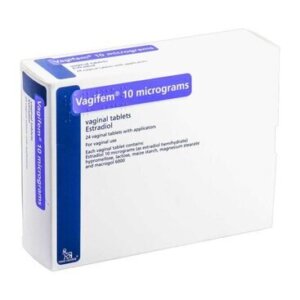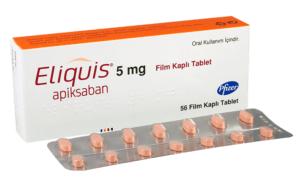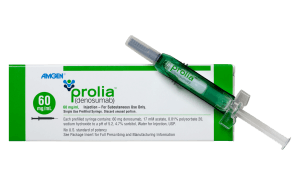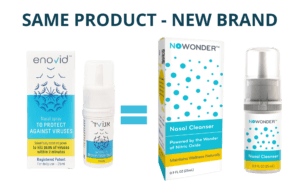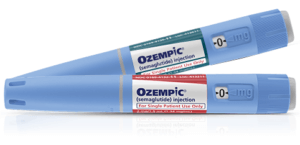 As we approach Israel’s 76th birthday on May 15th, we can look back on some of the exceptional achievements made by the Start-up Nation in healthcare, science, and commerce, thanks to the work done here in Israel by universities, institutes, individual scientists, and companies. It’s no secret that Israel punches far above its weight regarding innovation and invention in several fields, most significantly in medicine, agriculture, and high-tech.
As we approach Israel’s 76th birthday on May 15th, we can look back on some of the exceptional achievements made by the Start-up Nation in healthcare, science, and commerce, thanks to the work done here in Israel by universities, institutes, individual scientists, and companies. It’s no secret that Israel punches far above its weight regarding innovation and invention in several fields, most significantly in medicine, agriculture, and high-tech.
This blog will focus on the area that we are most familiar with and discuss the progress that has been made thanks to work done here in the fields of pharmaceuticals, medicine, surgery, and healthcare generally. But it would be a mistake on Israel’s 76th birthday to skip over some of the other incredible success stories that have hallmarked its impact on the rest of the world. Here is a summary of some of Israel’s most valuable products or services since 2000.
- Mobileye provides vision-based advanced driver-assistance systems (ADAS) for autonomous driving. In 2017, Intel acquired it for over $15 billion, the largest buyout value ever.
- Wix.com allows users to design and build websites using drag-and-drop tools and user-friendly interfaces. Wix is still running as a NASDAQ-listed company with a market capitalization of about $7.5 billion today.
- Check Point Cybersecurity Solutions is a leading cybersecurity developer and supplier. It offers products that safeguard information and network infrastructure, such as firewall and VPN technologies, advanced threat prevention, and cloud security solutions. The company has a market capitalization of almost $20 billion today.
- Waze was one of the first navigation apps and remains the most popular. Google bought the company in 2013 for about $1 billion.
- Gett (previously GetTaxi) offers a service that connects customers with transportation providers. Customers can order a taxi or courier using their mobile device, automatically providing GPS-based location information.
Israel’s contributions to the healthcare and wellness field
Every society has slightly different models. My own experience before moving to Israel includes old-fashioned family doctors who made regular house calls and pharmacies that made medicines to order. We were also raised with “private practice” styles where patients visited small, local clusters of doctors’ rooms usually shared by a wide range of specialists and general practitioners, providing a one-stop shop for most medical needs. Finally, I arrived in Israel, where medical services were highly bureaucratic and impersonal (socialized medicine). What Israel had in its favor for immigrants like me was universal health care at minimal cost. Although the Israeli healthcare model took me a while to get used to, I think we have overtaken most other countries (including the other two I have lived in) regarding quality, speed, and extent of health services.
A significant part of the improvement in the level of service has come from the substantial investment in money and brainpower poured into the research and development of medical technology. Realistically, all of this investment was made with the primary intention of exporting the results to the rest of the world since Israel is too small an economy for there to ever be a chance of recovering even a fraction of the money spent on research. However, we have enjoyed considerable benefits from being at the forefront of health advancement.
As we approach Israel’s 76th birthday, let’s start with some of the most significant changes introduced to improve health and well-being in Israel and enjoyed worldwide.
Pillcam was invented at the end of the last century and approved by the FDA in 2001. This unique device can replace the need for investigations of parts of the bowel that can’t be reached by techniques such as endoscopy and gastroscopy. A Pillcam is a capsule containing a miniature camera that captures images as it passes through the bowel after being swallowed, transmitting them wirelessly to a receiver worn by the patient. Physicians then read and analyze the images, and diagnosis and treatment can be made. Pillcam is especially useful in patients with Crohn’s disease, which can affect any part of the bowel. By 2020, more than four million patients had been diagnosed using the device. The Israeli company that developed the first capsule camera, Given Imaging, was sold to European interests in 2013 for $860 million and was one of the first significant breakthroughs for Israeli medical technology.
Opgal Medical is working with the Sheba Medical Center, which has been rated as one of the ten most advanced hospitals in the world. Together, they are adapting some of the technology developed by Opgal’s parent company, El-Op Electro-Optics Industries, which specializes in industrial and military technology like thermal imaging, remote sensing, and lasers and has developed a thermal imaging system for cardiac surgery based on thermal coronary angiography (TCA). It provides far better accuracy in imaging during cardiac surgery. Thanks to this technique, cardiac surgeons can reduce the number of repeat procedures significantly, resulting in lower overall costs to insurers and reducing the load on physical resources like operating rooms and recovery beds by half. Further refinement of the optical device could have important ramifications in treating a wide range of procedures, such as peripheral vascular surgery, ocular and neurosurgery, and cancer detection.
ReWalk Robotics has invented a wearable exoskeleton that enables individuals with spinal cord injuries to move about and climb stairs. ReWalk’s technology significantly improves users’ quality of life and significantly advances medical rehabilitative devices.
Orcam is another optical device, in this case, designed to help visually impaired people with AI-powered assisted vision. Professor Amnon Shashua, the inventor of Mobileye, founded the company. The device is a tiny camera clipped onto the user’s eyeglass frame and connected to a portable computer that slips into a pocket or pouch.
MicronJet microneedles allow for nearly painless subcutaneous injections of vaccines and drugs. Its flagship product is a 0.6mm diameter microneedle that has received clearance in both the USA and Europe. The needle is ideal for sensitive and delicate skin. It is popular for aesthetic treatments like Botox injections, skin rejuvenation, and hydration. The device was developed by NanoPass Technologies.
In the pipeline for Israeli healthcare development
What follows are some promising new Israeli ventures. Only time will tell how they will fare in the global healthcare market, but one thing is clear: Israeli health innovation is alive and well.
Novocure has already secured nearly one billion dollars of funding based on the exciting possibilities provided by its unique and distinctive noninvasive treatment for solid tumors. The technique is known as Tumor-Treating Fields (TTFields). It uses low-intensity alternating electric fields to disrupt cell division during mitosis (cell splitting).
Eleos Health built a system that automates behavioral care administration. It integrates all office functions into one platform, allowing healthcare professionals to free themselves from excessive administrative workload and focus on providing patient care. Current users have agreed that it represents a huge time-saving solution, decreasing their administrative workload by up to 50%. Since this is one of the fastest-growing healthcare market sectors, the system, a trailblazer in this market, could become another Israeli Unicorn (one billion dollar market value) within a few years.
Augmedics is developing XVISION, a device that gives orthopedic surgeons augmented reality vision from a head-mounted display and camera. It allows surgeons to see the patient’s spine as if they had “X-ray vision.” XVISION allows more accurate instrument manipulation during implants and spine procedures. It was the first augmented reality navigation system to gain FDA approval for surgery and has already been used in 5,000 procedures in the U.S.
Memic has developed the Hominis surgical platform that features miniature human-shaped robotic arms that mimic human dexterity and can surpass human flexibility thanks to its 360-degree articulation. The device is used in robotic-assisted surgery procedures and has been especially successful in transvaginal hysterectomies. Since there are more than 600,000 hysterectomies performed in the U.S. each year, but only 15% of these are currently done via the transvaginal technique, which is recommended by the American Congress of Obstetricians and Gynecologists (the balance being done via abdominal surgery), the potential market for the device is huge.





